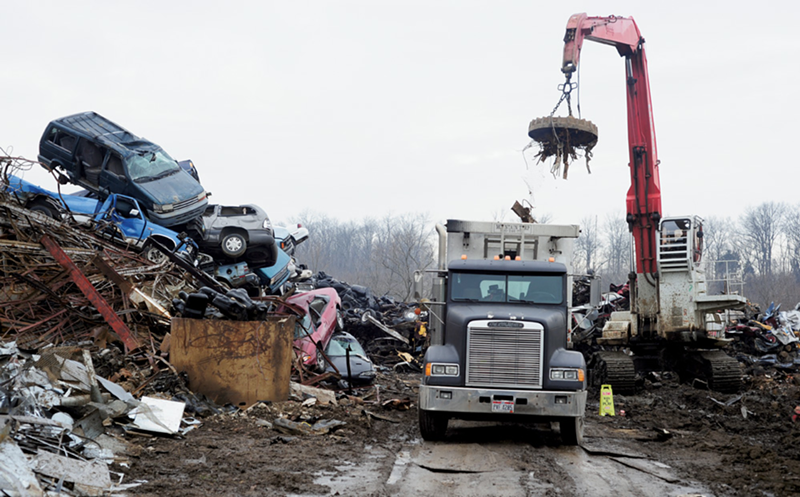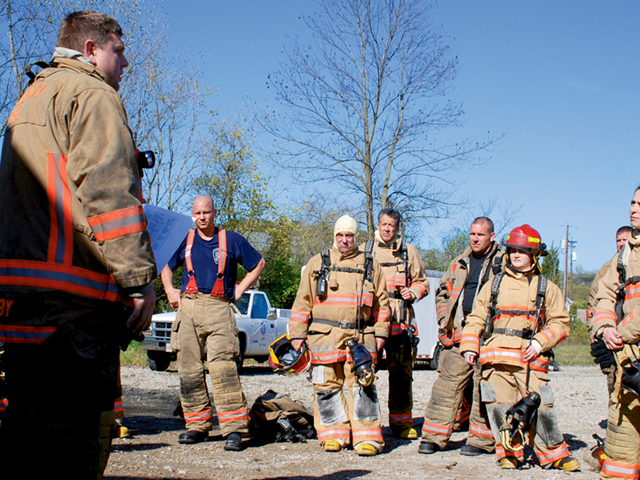G
as money. That’s why Tina Karle and her husband scrap. They both work, he as a maintenance man, she as a writer of hiking guides, but scrapping is something they do to fill their tanks and make their paychecks stretch.
They advertise on Craigslist to remove unwanted household appliances. Tina acts as the secretary, answering calls and emails and tracking pick-ups. Her husband does the physical aspect, hauling the washers and dryers, taking them apart and selling them at scrap yards. He uses a Freon recovery system to be compliant with environmental codes when working on refrigerators.
“Learned it from a homeless guy, believe it or not,” Tina says. Her husband worked alongside a homeless man on a housing rehab crew that schooled them on metals, how to separate the copper, aluminum, steel and brass to get the best price. “This man had scrapped metal to get by and we realized, ‘Oh hey, there’s money to be made in this and we can do the same.’ ”
Prices for scrap metal spiked in 2006 and 2007 — at the same time the economy was tanking — increasing demand and luring more and more people in need of extra cash to become involved in the practice.
In the scrap business there hasn’t been an economic downturn, says Mike Chard, supervisor at Garden Street Iron and Metal, adding, “In fact, it’s been an upturn.”
The company has been able to maintain its workforce, and grow, despite the recession. The scrap industry nationally has added 10,000 jobs to the U.S. economy since 2010, according to the Institute for Scrap Recycling Industries.
“People’s perception of scrapyards is that it’s dirty, nasty, shady, but you come across the smartest, most interesting people,” Chard says. Some do it because of their commitment to recycling, some need the money or, for the older customers, it gives them something to do. Chard describes one of his regulars, an elderly woman who sells cardboard, something Garden Street also buys. She sometimes makes only three cents, but “she gets to come in and talk to everybody and feels like she’s doing her part.”
And his company does its part, according to Chard. They have a six-figure computer system that tracks everything. They scan and store a copy of the I.D. of each customer. This is a mandated procedure for scrap metal transactions as of 2008, in response to widespread metal theft concerns, but something Chard says they were already doing. They also record camera shots of all transactions, including license plates.
They are so vigilant about monitoring business that Chard says the customers have been joking, “When you gonna start swabbing us for DNA?”
Chard acknowledges concerns about metal thefts and doesn’t buy cemetery urns, manhole covers or items that are clearly stolen. Anyone selling a junk car has to have the title. As a company, Garden Street has tried to answer community concerns, even if they don’t always agree. Specifically, at their Spring Grove Avenue location, they have stopped serving the grocery cart guys — the individuals that pull metal debris in grocery carts, or self-constructed wagons — due to theft concerns.
“Grocery cart guys get a bad rap in terms of scrapping,” Chard says. “They typically do not have the tools or means to pull off theft like stealing siding off houses or stripping copper pipes.”
It is the theft of copper, in particular, that feeds fears about scrapping. From 2006 to 2007 metal thefts in Cincinnati increased by a whopping 80 percent and were overwhelmingly copper-related. Those rates show no sign of decline, and police departments throughout Greater Cincinnati are spending more time and resources on the tracking and targeting of metal theft.
No one knows the very real impact of copper pipe theft better than Jen Walters, executive director of the Lower Price Hill Community School. Her organization, which provides GED classes and food services to the Lower Price Hill neighborhood, has been hit more than once. Most recently, thieves hollowed out an air-conditioning unit to crawl through and gain access to the building without setting off the alarm. They caused $30,000 in damage for what Walters later discovered was $300 made by selling the torn-out copper pipes.
“We had to shut our food pantry for two months to make up the cost,” Walters says.
“What hurts the most is that it was people we knew,” she adds. Their family members were in the next week, apologizing. She describes the thieves as not in their right minds and driven by drugs, as are many of the metal thefts in Lower Price Hill.
“It is the drug addicts that are causing the problems,” echoes Krista Jones, who get all the attention, all of it bad.
Jones describes herself as more of a recycler than a scrapper. Her involvement in scrapping is just one of the ways she uses what other people have discarded to provide a second income for her family. She resells vintage and costume jewelry and makes new jewelry out of old, broken metal and gem pieces. Also, Jones buys storage units and does what she can with the contents, including scrapping metal.
“People don’t know how much work it is. Hours of sorting, separating and hauling. When it comes to scrapping, some money is better than none,” she says.
“A few bad ones make it bad for everybody,” Chard says. While the rush to steal for fast money is on the rise and is driven by bad elements, it overshadows the average people that scrap. And the average people, driven by economic hard times, are on the rise too.
That’s something that even Walters, despite the theft at her building, can concede. She sees students of the school gathering cans and metal debris for positive use. And the school regularly collects cans for a woman in the neighborhood who picks them up year-round to get money for Christmas.
“Still,” she says, “the temptation for quick money is a big one.” ©






